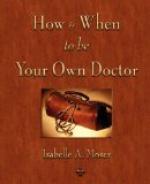First lets dismiss some apparently logical but incorrect explanations for the unusually good health of these isolated peoples. It wasn’t racial, genetic superiority. There were extraordinarily healthy blacks, browns, Orientals, Amerinds, Caucasians. It wasn’t living at high altitude; some lived at sea level. It wasn’t temperate climates, some lived in the tropics, some in the tropics at sea level, a type of location generally thought to be quite unhealthful. It wasn’t a small collection of genetically superior individuals, because when these peoples left their isolated locale and moved to the city, they rapidly began to lose their health. And it wasn’t genetics because when a young couple from the isolated healthy village moved to town, their children born in town were as unhealthy as all the other kids.
And what do I mean by genuinely healthy? Well, imagine a remote village or a mountain valley or a far island settlement very difficult to get to, where there lived a thousand or perhaps ten thousand people. Rarely fewer, rarely more. Among that small population there were no medical doctors and no dentists, no drugs, no vaccinations, no antibiotics. Usually the isolation carried with it illiteracy and precluded contact with or awareness of modern science, so there was little or no notion of public hygiene. And this was before the era of antibiotics. Yet these unprotected, undoctored, unvaccinated peoples did not suffer and die from bacterial infections; and the women did not have to give birth to 13 children to get 2.4 to survive to breeding age—almost all the children made it through the gauntlet of childhood diseases. There was also virtually no degenerative disease like heart attacks, hardening of the arteries, senility, cancer, arthritis. There were few if any birth defects. In fact, there probably weren’t any aspirin in the entire place. Oh, and there was very little mortality during childbirth, as little or less than we have today with all our hospitals. And the people uniformly had virtually perfect teeth and kept them all till death, but did not have toothbrushes nor any notion of dental hygiene. Nor did they have dentists or physicians. (Price, 1970)
And in those fortunate places the most common causes of death were accident (trauma) and old age. The typical life span was long into the 70s and in some places quite a bit longer. One fabled place, Hunza, was renowned for having an extraordinarily high percentage of vigorous and active people over 100 years old.
I hope I’ve made you curious. “How could this be?” you’re asking. Well, here’s why. First, everyone of those groups lived in places so entirely remote, so inaccessible that they were of necessity, virtually self-sufficient. They hardly traded at all with the outside world, and certainly they did not trade for bulky, hard-to-transport bulk foodstuffs. Virtually everything they ate was produced by themselves. If they were an agricultural




